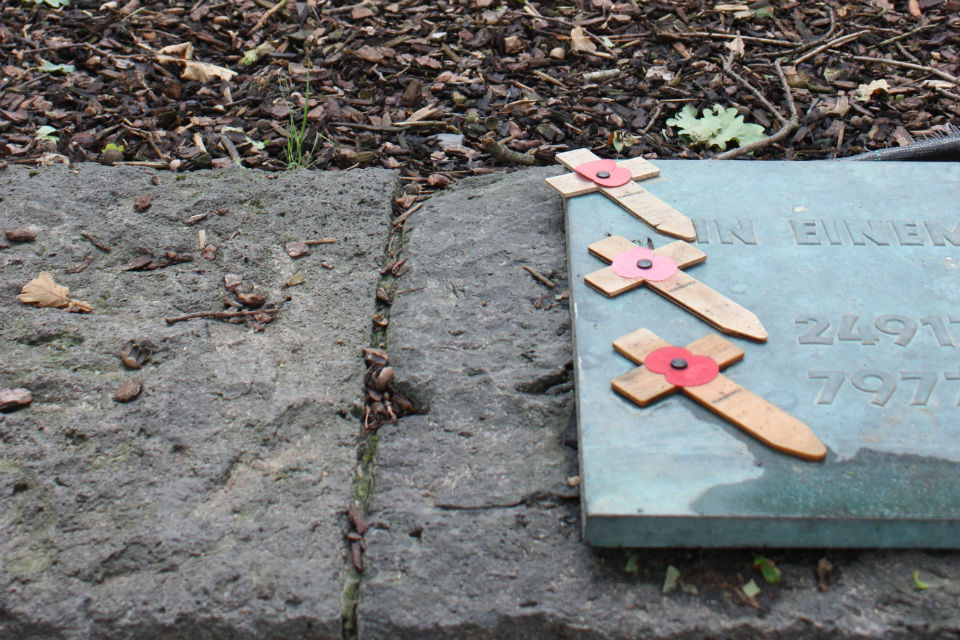
The First World War began 100 years ago and the recent centenary events encouraged us all to take a moment to consider the sacrifice made on our behalf. Yet the scale of the slaughter and the horrors faced are difficult for modern society to comprehend. To get a better understand this sacrifice I went on a CSSC coach trip to Flanders.
Interestingly I was the only member under 40 and most of my fellow travellers were retired civil servants. I also took my father with me as his dad had been drafted into the US Army and served as a machine gunner in the Meuse-Argonne Offensive of 1918. In fact he was awarded the Bronze Star and a sniper once shot the button off his collar!
Our guide for the trip was an enthusiastic Belgian named Conrad who gave a moving context to the tour: As we set off through the lush countryside he explained to us that we weren’t tourists, we were pilgrims who had come to pay our respects and offer thanks.
Looking out the window I was struck by how new the houses looked and how peaceful the farmland looked. The war swept back and forth over this land and whilst names like Arras and Passchendaele may be sacred to us, to others they’re home - albeit a dangerous one still: Two farmers had been killed the week before by an unexploded shell buried in the soil.
One of the startling aspects of the trip where the ways towns and battlefield sites continue to mark the fallen.
Vimy Ridge, Ypres & Thiepval
At Vimy Ridge, the site of an audacious Canadian attack on the German lines in Easter 1917, there is a beautiful memorial carved from a single 30 tonne block of white stone.
Ypres – pronounced ‘Wipers’ by British troops - is a handsome town rebuilt in its former image after being torched during the war and dominated by a massive cloth hall that houses an excellent museum about the war. Every evening since 1928 (except during WWII) crowds have gathered at the Menin Gate outside the town while the Last Post is sounded by the local fire brigade. It’s a fine tradition, and it was a privilege to take part alongside a visiting company of Canadian troops.
South of Arras is the Thiepval Memorial to the Missing of the Somme. The battle raged from July to November 1916, leaving Britain with nearly half a million casualties for the sake of 5 muddy miles. The memorial set among gentle, scenic hills is huge and it needs to be to hold the names of so many dead. It’s a beautiful and moving place.
We also explored some of the remnants of the war, including the huge Lochnagar crater where tunnellers detonated 24 tonnes of explosives under German lines on the first day of the Battle of the Somme.
Even more spookily we descended into the dank gloom of the Wellington Quarries, a cave system that the Tommies and Kiwis extended 12 miles underground toward German lines. On 9 April 1917 the Arras offensive began. Tunnel exits were dynamited, whistles sounded and the Allies poured out into the teeth of German guns. The attack succeeded in pushing enemy lines back by 7 miles.
More than anything we saw graves. Thousands of them, and all of them perfectly maintained in a ongoing act of remembrance.

The muted greens of a German cemetery and the bright white rows of Allied dead whose names, ranks and mottos etched by hand in pristine Portland stone. We saw poppy reds, cornflower blues and the whites of daisies. Flowers that symbolize the war in Britain, France and Belgium - planted with care along the roads travelled by pilgrims today.
The flowers really bought home the cost of the war. Try to see each flower as a fallen man, look out across a field of poppies and you begin to understand what happened there and why it's important to remember their sacrifice.
